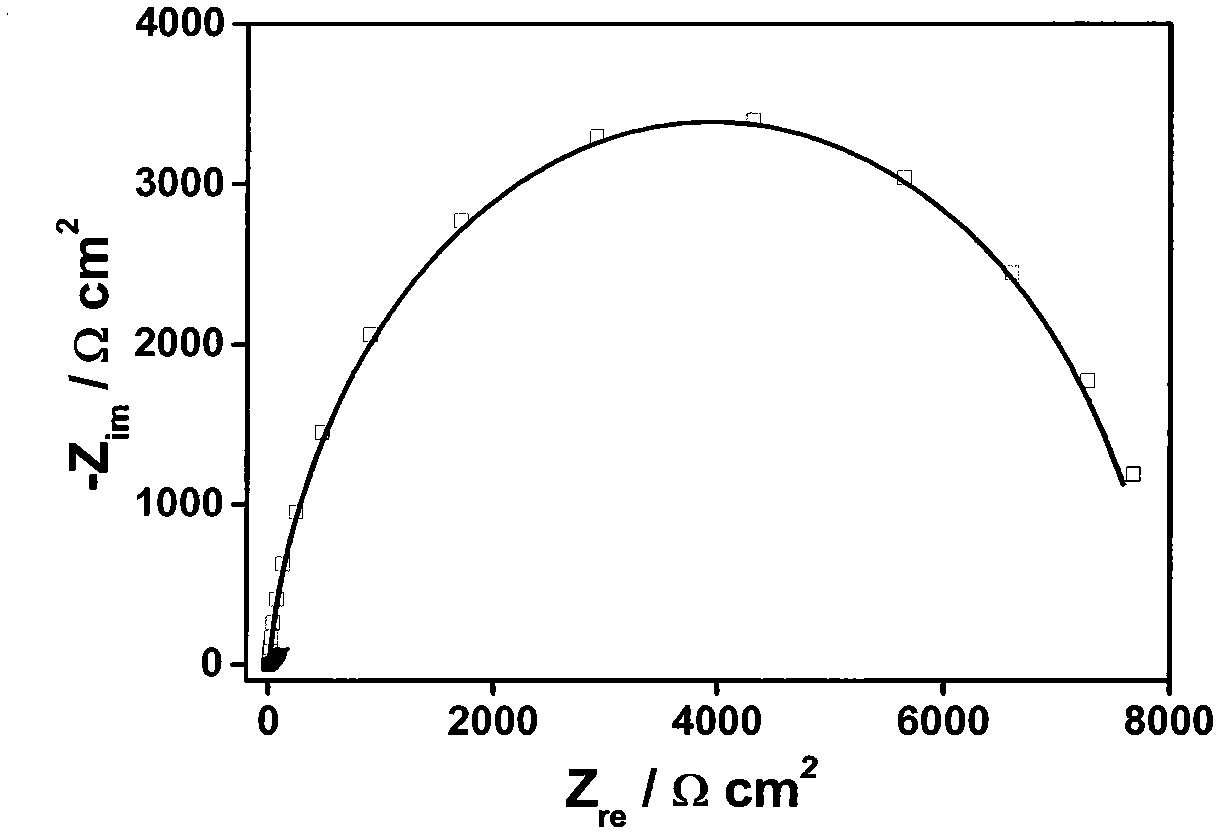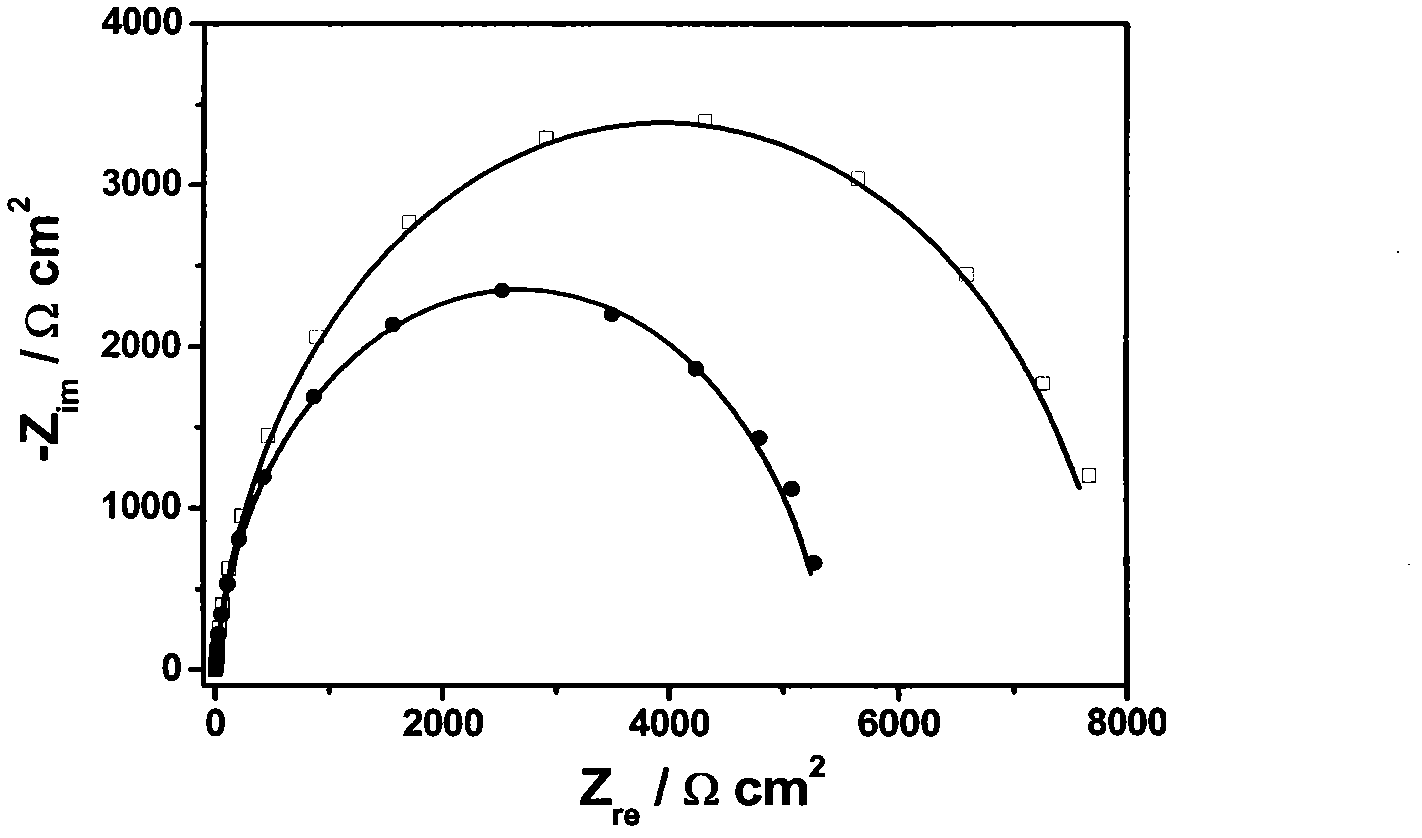Method for detecting 1,8-diaminonaphthalene based on electrochemical DNA biosensor
A biosensor, diaminonaphthalene technology, applied in the field of electrochemical detection and chemical sensors, can solve the problems of DNA membrane uniformity, poor stability, and less detection of aromatic amine pollutants, etc. The method is simple, easy to implement, and resistant to environmental factors The effect of strong interference performance and low cost
- Summary
- Abstract
- Description
- Claims
- Application Information
AI Technical Summary
Problems solved by technology
Method used
Image
Examples
Embodiment 1
[0031] 1) Put the gold electrode on the buckskin polishing cloth with 0.05μm α-Al 2 o 3 The powder is polished to a mirror surface. After polishing, the surface dirt is first washed away, and then ultrasonically cleaned in ethanol and deionized water, each time for 2 to 3 minutes, and repeated three times; then in 1mol / L H 2 SO 4 The solution was scanned by cyclic voltammetry until it was stable, and finally rinsed with deionized water and dried with nitrogen to obtain a gold electrode with a clean surface;
[0032] 2) High ionic strength Tris-NaClO with pH=7.4 4 Buffer solution to dissolve solid hairpin DNA, in which Tris concentration is 20mM, NaClO 4 The concentration is 300mM, mixed with a vortex shaker, and left at room temperature for 12 hours, under which conditions the hairpin DNA structure is formed;
[0033] 3) Soak the activated gold electrode in the pre-prepared 5 μM hairpin DNA solution, and let it stand at room temperature for 4-5 days to obtain the hairpin D...
Embodiment 2
[0035] With hairpin DNA modified electrode of the present invention as working electrode, with Ag / AgCl (saturated KCl solution) electrode as reference electrode, platinum electrode as counter electrode to construct three-electrode system, electrolyte solution is 20mmol / L Tris-NaClO of pH=7.4 4 2mM K prepared in buffer solution 3 [Fe(CN) 6 ] / K 4 [Fe(CN) 6 ], the concentration of 1,8-diaminonaphthalene solution preparation is respectively: 0.1nmol / L, 0.3nmol / L, 0.6nmol / L, 3nmol / L, 6nmol / L, 30nmol / L, 60nmol / L, 120nmol / L, 300nmol / L and 600nmol / L. The PARSTAT2273 electrochemical comprehensive test system was used for electrochemical impedance measurement. The experiment shows that the hairpin DNA modified electrode has excellent performance, fast response time, high sensitivity, and the detection linear range of 1,8-diaminonaphthalene: 0.6~120nmol / L.
[0036] Table 1 Electrochemical impedance change (ΔR CT )
[0037]
PUM
 Login to View More
Login to View More Abstract
Description
Claims
Application Information
 Login to View More
Login to View More - R&D
- Intellectual Property
- Life Sciences
- Materials
- Tech Scout
- Unparalleled Data Quality
- Higher Quality Content
- 60% Fewer Hallucinations
Browse by: Latest US Patents, China's latest patents, Technical Efficacy Thesaurus, Application Domain, Technology Topic, Popular Technical Reports.
© 2025 PatSnap. All rights reserved.Legal|Privacy policy|Modern Slavery Act Transparency Statement|Sitemap|About US| Contact US: help@patsnap.com



